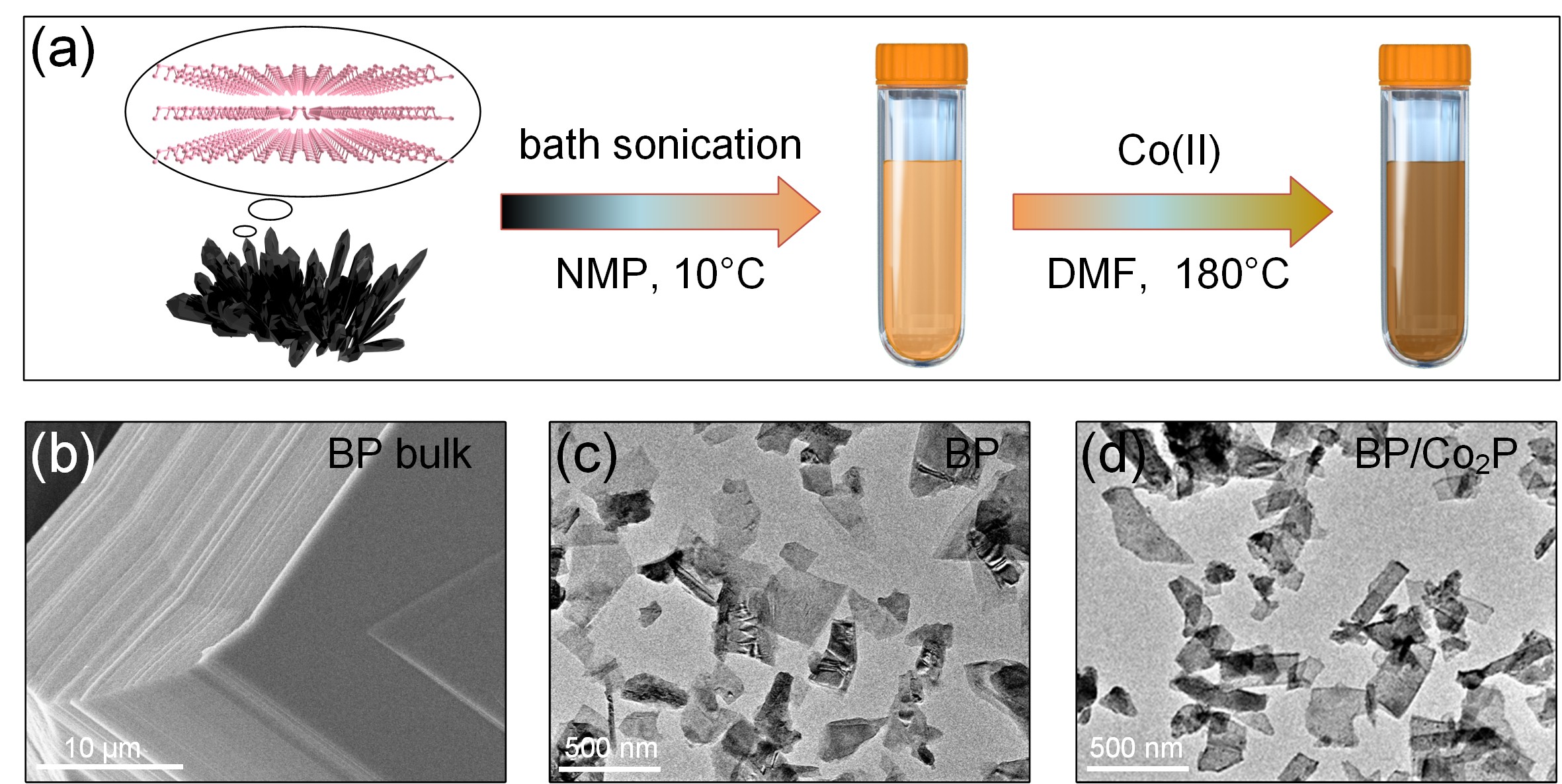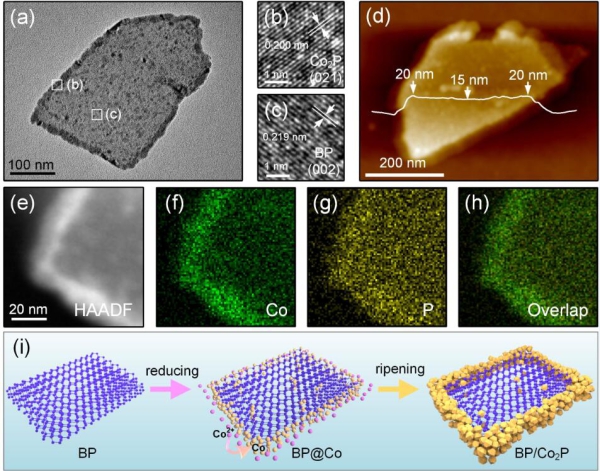Researchers Design A Simple Solvothermal Strategy to Synthesize In-plane Black Phosphorus/Dicobalt Phosphide Heterostructures
Date:28-12-2017 | 【Print】 【close】
Black phosphorus (BP) nanosheets are potential electrocatalysts for water electrolysis to produce hydrogen and oxygen, the in-plane heterostructures have intrinsic advantages for its preparation.
The research group led by Prof. YU Xuefeng from Shenzhen Institutes of Advanced Technology, Chinese Academic of Science, designed a simple solvothermal strategy to synthesize in-plane black phosphorus/dicobalt phosphide (BP/Co2P) heterostructures by defect/edge-selective growth of Co2P on the BP nanosheets. The bulk BP crystals are exfoliated into nanosheets. After centrifugation, the BP nanosheets are mixed with the Co ions N, N-dimethylformamide (DMF) solution in a screw-capped Teflon bottle and react at 180°C for 4 h under Ar protection without water or oxygen. The BP/Co2P nanosheets are obtained using careful centrifugation.
During liquid exfoliation, defects are inevitably produced on the BP nanosheets. The defects result in unsaturated phosphorus atoms having a smaller coordination number, more lone-electrons, and higher reducing activity. Therefore, Co ions can be easily reduced to Co atoms on the defect sites. In addition, as the Co atoms are generated, they probably bond with adjacent P atoms. Then, lattice rearrangement, crystallization and continuous ripening of Co2P takes place. Since the unsaturated P and defects are usually enriched on the BP edges, formation of Co2P tends to take place at the edges as well.
BP nanosheets have large potential in electrocatalysis due to the large surface area, high carrier mobility, and active lone pairs. Owing to occupation of the original defects, the anchored Co2P improves the electrical conductivity and active electrocatalytic sites enabling the BP/Co2P nanosheets to deliver stable and excellent hydrogen evolution reaction (HER) and oxygen evolution reaction (OER) performances even under a large potential and current density.
In conclusion, considering that defects affect the properties and stability of BP, proper utilization of defects is a new and efficient strategy to improve the stability and performance of BP nanosheets. As a wet chemical method to prepare monodispersed and in-plane BP heterostructures, it can be extended to produce other BP-based nanocomposites to expand to corresponding applications.
The results titled “In-Plane Black Phosphorus/Dicobalt Phosphide Heterostructure for Efficient Electrocatalysis" was published in Angewandte Chemie International Edition.
This work was jointly supported by the National Natural Science Foundation of China, China Postdoctoral Science Foundation, Key Research Program of Frontier Sciences, CAS, Science and Technology Key Project of Shenzhen, Leading Talents of Guangdong Province Program, Hong Kong Research Grants Council (RGC) General Research Funds (GRF), and City University of Hong Kong Strategic Research Grant.

Figure 1. Schematic diagram of the synthesis of the BP/Co2P heterostructures and the corresponding SEM images

Figure 2. Morphology of the BP/Co2P nanosheet and the schematic diagram of the synthesis mechanism of the BP/Co2P heterostructures

Figure 3. Polarization curve of BP/Co2P for HER, OER and water splitting
CONTACT:
ZHANG Xiaomin
Shenzhen Institute of Advanced Technology
Phone: 86-755-86585299
E-mail: xm.zhang@siat.ac.cn